There are only three games left in this year's men's NCAA tournament, which means it's time to take a look at how some of the top NBA draft prospects have improved or hurt their draft stock in Indiana this month.
Here's the latest intel on players who've likely played their last college game, like potential No. 1 overall pick Evan Mobley, as well as players who'll get another chance to make an impression in the Final Four, like Gonzaga's Jalen Suggs.
MORE: Updated Top 100 NBA draft prospects
What we saw last weekend
 Evan Mobley | PF/C | USC
Evan Mobley | PF/C | USC
Top 100 ranking: 2
In USC's Elite Eight loss to Gonzaga, Mobley showed both what makes him such an intriguing prospect and the many things he needs to work on. He finished with with 17 points, 5 rebounds and 3 assists in an up and down showing.
Mobley looked noticeably nervous right out of the gates and was taken into the post repeatedly and scored on by All-American Drew Timme. Mobley didn't have the strength or physicality needed to slow him down. Lacking a degree of toughness and aggressiveness, it's pretty clear that he's going to have some issues early in his career dealing with stronger big men in the NBA. He struggled keeping Gonzaga off the offensive glass (three defensive rebounds in 35 minutes) like he has for much of the season. Still, his huge standing reach and incredible fluidity allows him to have a huge impact on the defensive end of the floor. He's extremely difficult to shoot over, can cover ground seamlessly on the perimeter, and has phenomenal timing protecting the rim.
Mobley isn't a go-to guy offensively at this stage of his career, certainly not against a defense of this caliber. He was unable to consistently use his superior size to score with his back to the basket against the likes of Timme and the smaller Corey Kispert, coming up empty on several possessions. He did show his very high skill level from the mid and high post with some impressive drives and passes, spinning around with excellent body control and touch, and using both hands to finish from difficult vantage points. His mobility allows him to be an excellent target slipping screens and finishing above the rim or gravitating to the offensive glass for extra possessions as well.
This wasn't Mobley's best outing by any means, but he's built a very strong résumé for himself with the season he had and the fact that he was able to help USC reach the Elite Eight is a huge feather in his cap. He's well positioned to be a top draft pick depending on how the order of the lottery shakes out.
-- Jonathan Givony
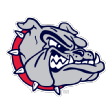 Jalen Suggs | PG | Gonzaga
Jalen Suggs | PG | Gonzaga
Top 100 ranking: 5
After a quiet showing in the first three rounds of the NCAA tournament, Suggs had a signature performance in leading Gonzaga to the Final Four, posting a near triple-double with 18 points, 10 rebounds and 8 assists.
Suggs showed what makes him such an interesting guard prospect on both ends of the floor. He repeatedly pushed the ball in the open floor, using his outstanding quickness and ability to accelerate powerfully out of changes of speed to get right into the teeth of the defense and either finish aggressively or draw fouls. He was equally as impressive in the half-court, picking apart USC's zone with timely cuts and manipulating ball-screens intelligently to find the open man with pocket passes or with over the top lobs for easy baskets. He played an unselfish and highly under-control game, only being robbed of a triple-double because of good looks he generated that rimmed out.
Just 1-for-11 from beyond the arc in the NCAA tournament, Suggs got on track with his jump shot too. He made a pair of off the dribble 3-pointers and knocked down several pretty floaters and pull-up jumpers.
Suggs was highly disruptive against an overmatched USC backcourt that wasn't prepared for the level of intensity, physical skills and competitiveness that he offers on every possession. He prevented USC from getting into its offense, blowing up plays and being an absolute nuisance on and off the ball as usual.
Suggs reiterated once again how much his serious-minded approach, versatility, toughness and winning style should have any NBA team drafting in the top three thinking long and hard about what he could do to elevate their culture.
-- Givony
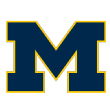 Franz Wagner | SF/PF | Michigan
Franz Wagner | SF/PF | Michigan
Top 100 ranking: 8
Wagner ended his sophomore season -- and likely his college career -- in agonizing fashion, missing two potential go-ahead 3s in the final seconds of Michigan's Elite Eight loss to UCLA while suffering defeat at the hands of Mick Cronin and the red-hot UCLA Bruins.
During a 1-for-10 shooting night, Wagner airballed an uncontested pull-up 3 with 12 seconds left that would have put Michigan up one, then missed a last-second heave with 0.5 left that could have made him a hero in Ann Arbor forever. The 6-foot-9 German forward shot just 2-for-16 from 3 in the NCAA tournament, missing his last eight 3-point attempts. That resurfaced some questions about his ability to score the ball consistently in the half court and his fluctuating confidence from behind the arc. However, Wagner's signature performance against Scottie Barnes in the Sweet 16 and the consistent two-way versatility and toughness he showed over the course of the tournament has earned him legitimate looks in a top 10 that lacks much clarity after 5.
When I first interviewed Wagner when he was a 6-foot-5, 15-year-old guard in January 2017, he said this of his game: "I think I can bring energy to the team and I'm really competitive."
Over four years and four inches later, that's exactly what Wagner brought to Michigan this season. He went for 15 points and 7 rebounds in a win over LSU and Cameron Thomas, defending multiple positions, making heady reads and attacking the rim with physicality. He outdueled fellow lottery pick Scottie Barnes and Florida State to the tune of 13 points, 10 rebounds, 5 assists and 0 turnovers as the catalyst of a 20-point win. He had no shortage of signature performances against Big Ten foes during the regular season.
With a 6-11 wingspan, a high motor and excellent technique, Wagner has proven to be a highly impactful defender both on and off the ball and there's little to suggest that won't continue in the NBA. He's aggressive fighting over the top of screens. He's technically sound on closeouts. He's active digging down on the ball when one pass away. He plays angles well and uses his size and instincts to make plays at the rim as both the primary and weakside defender. He understands at rim verticality. He's a great positional rebounder.
Wagner's clear swing skill is his shooting, especially when you consider the fact that he plays with a high center of gravity and isn't overly dynamic with the ball for a wing. With high hips he also struggles with balance at times and isn't as comfortable as he could be changing speeds or directions, suggesting his best minutes may come at power forward. But Wagner can push himself in transition, deliver heady pocket passes as a pick-and-roll ball handler, and is highly unselfish. So long as he's not asked to be a No. 1 or No. 2 scoring option, Wagner still looks the part of an NBA starter and an ideal fit in the modern NBA.
Although younger than projected one-and-dones like Barnes, Mobley, Suggs and Sharife Cooper, Wagner has more than 1,600 minutes of NCAA experience and 59 games of high-level pro experience to his name with Alba Berlin. He'll enter the NBA battle-tested with a mature style of play. He has as high of a floor as any prospect projected outside the top-10. The sour end to the season hurts now, but expect Wagner to still garner significant interest in the top-10 thanks to his age, versatility and skill level at a position every NBA team is looking to fill.
-- Mike Schmitz
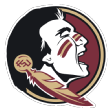 Scottie Barnes | SF/PF | Florida State
Scottie Barnes | SF/PF | Florida State
Top 100 ranking: 9
Barnes did not have a great NCAA tournament, posting 18 points, 11 turnovers, 9 assists, 6 rebounds and 4 steals in 73 minutes of action before bowing out in the Sweet 16. The ACC Rookie of the Year was outplayed by Wagner, who is actually 26 days younger than Barnes, despite being a sophomore. The disappointing blowout loss to Michigan generated some discussion that Barnes might actually elect to return for his sophomore year.
Barnes hasn't really established what his role will be offensively in the NBA. He started the season miscast as a point guard and ended it playing off the ball. He was rarely guarded on the perimeter due to his shaky outside shot. Turnovers were a consistent issue due to his high handle, casual approach and the lack of perimeter shooting around him that allowed teams to sag off him and load up the paint with impunity.
Barnes' passing ability is clearly his best attribute. Surrounding him with shooting will be crucial to maximize that skill, providing him with better spacing than what he enjoyed at Florida State. His size, length and aggressiveness really shine through most vividly in the open court right now, but he's had some impressive moments operating out of pick-and-roll sets. He can see over the top of defenses and use his 7-foot-2 wingspan to get to the rim and finish in traffic.
While the results weren't always there this season, Barnes' shooting mechanics do look much improved from last year, offering some hope that he will be able to make jumpers with his feet set consistently enough to not be a liability on that end down the road.
Barnes' length, intensity, instincts and IQ make him one of the more versatile players in the draft on the defensive end of the floor. He's proved capable of guarding guards and big men alike, regularly being asked to spearhead the top of Florida State's press.
Barnes' lack of shooting and struggles as a one-on-one creator make him somewhat of a situational fit in today's NBA. He'll depend on a team's existing personnel and style of play -- with comparisons ranging from the likes of Draymond Green to Michael Kidd-Gilchrist. But he's such a winner and so instinctual on both ends of the floor that it's hard not envisioning a scenario where he finds success in the NBA in some capacity, even if clearly he's not going to be for every coach.
-- Givony
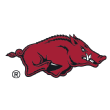 Moses Moody | SG/SF | Arkansas
Moses Moody | SG/SF | Arkansas
Top 100 ranking: 21
No prospect's draft stock took more of a hit over the past two weeks than Moody's.
The 18-year-old Arkansas wing entered the NCAA tournament with considerable momentum. He capped off an SEC Freshman of the Year season by averaging 22.2 points over his final four pre-tournament games, knocking down 43% of his triples and adding value on both ends of the floor.
In four NCAA tournament games, however, Moody averaged only 13 points in 35.8 minutes per game. He shot a woeful 41% from 2 and 3-for-17 from 3 while totaling just 2 assists to 7 turnovers. Moody's defensive intensity wavered, his aggression was sporadic, his shot looked flat, he proved too willing to settle for contested 2s, and his lack of burst, bounce, strength and quickness against teams like Texas Tech and Baylor really limited him on both ends.
On one hand, Moody entered the season projected outside the lottery as more of a floor-spacing wing who can make an open shot and attack a closeout with the wingspan (7-foot-1) to add value defensively. That's the role we saw him play at Montverde. His limitations as a ball handler and shot-creator in more of a featured role are further proof that he's best used as a complementary piece with more dynamic players around him.
But even with that in mind, NBA scouts won't be encouraged by how rattled he looked at times amid his struggles on the brightest stage, even throwing a panic outlet pass out of bounds against Baylor. Too often Arkansas looked crisper with Moody on the bench than on the floor. Despite an impressive statistical season overall, his issues against top-flight teams were a theme all year. Moody beat up on the SEC's bottom half yet had issues scoring efficiently against the conference's elite. In 11 games against teams under .500, Moody averaged 18.4 points on 60.3% from 2 and 43.3% from 3. In 21 games against teams with a winning record, Moody shot just 42% from 2 and 31% from 3 while committing more turnovers than assists.
There's clearly still value in his shooting potential, scoring instincts and length, and he'll absolutely benefit from playing alongside more pass-first guards than he had at Arkansas. But given the way Moody ended the season he'll need a really strong pre-draft process to prove that he's worthy of consideration at the back end of the lottery, where he was slotted coming into the tournament.
-- Schmitz
 Chris Duarte | SG | Oregon
Chris Duarte | SG | Oregon
Top 100 ranking: 24
Duarte saved some of his best basketball of the season for the NCAA tournament, averaging 22 points, 6.5 assists, 4 rebounds and 2 blocks per game before bowing out in the Sweet 16.
The third-team All-American's versatility, skill level and IQ were on full display. He's an extremely efficient offensive player (66% true shooting percentage) who takes what the defense gives him but can score from anywhere on the floor. He did a better job of attacking USC's vaunted zone defense than any player has thus far in the NCAA tournament, attacking Evan Mobley patiently and aggressively with mid-range stepbacks and straight line drives.
Duarte's passing ability was somewhat of a revelation over the course of the tournament. He showed he's much more than a shooter with the way he attacked closeouts, pushed in transition and generated offense out of pick and rolls. He showed the ability to finish above the rim and chase down blocks, and he's a sound defender with strong anticipation skills and competitiveness.
Clearly one of the best players in the college game, Duarte looks like a plug and play wing prospect who could step into a NBA game tomorrow and help a team with his perimeter shooting (42% 3-pt FG), and two-way versatility. The fact that he's turning 24 in June is the only reason he's not generating lottery buzz, but there will surely be a good market for him in the first round. Plenty of playoff teams will be attracted to adding a ready-made contributor like him on a rookie-scale contract.
-- Givony
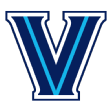 Jeremiah Robinson-Earl | PF | Villanova
Jeremiah Robinson-Earl | PF | Villanova
Top 100 ranking: 46
The Big East player of the year capped off a strong NCAA tournament with an all-around performance against No. 1 seed Baylor in the Sweet 16, showing exactly what his role could be eventually on a NBA team.
Robinson-Earl battled admirably in the paint all game long against a physically imposing frontcourt, grabbing 12 rebounds (five offensive) while showcasing his typical versatility on the defensive end. He uses verticality to his advantage to protect the rim thanks to his excellent timing, and moves his feet well on the perimeter on switches to contain smaller players.
He showed his creativity, vision and IQ as well, dishing out 14 assists in three NCAA tournament games with Villanova starting point guard Colin Gillespie sidelined due to injury.
While there's a lot of value in a tough, competitive, intelligent and versatile player like Robinson-Earl, NBA teams will want to see more from him as a perimeter shooter during the pre-draft process to make sure he can generate enough offense to stay on the floor. He's struggled to score against better defenses at times, passing up open 3-pointers for much of the season, and doesn't have the type of explosiveness to make up for that by finishing some of the plays he creates for himself around the rim.
There's a good chance that Robinson-Earl's college career is over after he was very close to leaving Villanova last season, and he's done a good job of showing the type of role he can play for a NBA team as well as some of the things he still needs to improve on.
-- Givony
 Davonte Davis | PG/SG | Arkansas
Davonte Davis | PG/SG | Arkansas
Top 100 ranking: N/A
For as lifeless as Moody looked, Davis brought non-stop energy, defending with intensity, relentlessly putting pressure on the rim, and dragging Arkansas to the Elite Eight while emerging as a potential 2022 prospect pending his development in a few key areas.
The 6-foot-3, long-armed freshman was the Razorbacks' spark plug in all four games, averaging 14.3 points and 6.5 rebounds while tasked with defending the likes of Mac McClung (2-for-6), Max Abmas (8-for-19), and Baylor guards Davion Mitchell and Jared Butler (4-for-11) for stretches. Willing to pick up 94 feet, sit down in a deep stance and agitate opponents with his quickness, Davis is an NBA-caliber defender with great instincts and the 6-foot-8 wingspan to handle bigger guards in time. In terms of sheer measurements, Davis has some similarities to Elfrid Payton at the same stage. On top of his defense, he's a stellar offensive and defensive rebounder willing to play a fill-in-the-gaps role alongside other stars.
Although full of burst off the bounce, he's still quite green. He's loose with his handle, sped up as a decision-maker, very left-hand dominant and not yet a threat from 3, knocking down just 2-of-13 triples in more than 700 minutes this season without the most encouraging stroke. He's at his best either using his quickness and long strides to attack the rim going left or rising up in mid-range spots to shoot over smaller defenders like he did in the final seconds to lift Arkansas past Oral Roberts. He also showed promise as a playmaker in space against Baylor, delivering bounce passes off the dribble and threading the needle a couple times in transition. For Davis to truly emerge as a breakout prospect in 2022, he'll have to extend his range, learn how to play at different speeds, and refine his decision making. But between his motor, defense, length, instincts and quick-twitch style, he has a lot of qualities that are hard to teach that surely caught the eye of NBA scouts in Indianapolis.
-- Schmitz
 Drew Timme | C | Gonzaga
Drew Timme | C | Gonzaga
Top 100 ranking: N/A
The 6-foot-10 sophomore center continued his incredibly productive NCAA tournament run with a strong showing against Mobley, the potential No. 1 pick, and USC's two-point defense, the best in the country. Timme scored 23 points on 19 shots in 31 minutes during Gonzaga's blowout victory. While Mobley's 7-foot-4 wingspan did bother him at times, Timme scored from all different angles, thanks to his superior physicality, footwork, touch and aggressiveness. Timme stepped through for scoop shots against Mobley, spun past him off the bounce, outran him in transition for a bucket, dropped in jump hooks and showed the ability to find cutters on the move comfortably. Timme's ability to carve out space on the interior overwhelmed the 215-pound Mobley at times, taking the 19-year-old out of shot blocking position with deep seals. The ultra-confident Timme even flashed some defensive activity, rotating with verticality, stepping in for charges, and ripping Tahj Eaddy on the perimeter, ending most of his highlights with a celebration.
Through four tourney games Timme has scored 85 points in 113 minutes while shooting an impressive 64% from 2 and dishing out 4.3 assists per game during that stretch. Allow him to catch with two feet in the paint, and it's usually a bucket at the college level. The 20-year-old is one of only 10 players in the past decade to average at least 23 points per 40 minutes on better than 65% shooting from 2. Of those 10, four are Gonzaga Bulldogs -- Brandon Clarke, Zach Collins, Kelly Olynyk and Timme -- which speaks to Mark Few's ability to get the best out of his bigs.
But how does Timme's game fit in the modern NBA? For as productive as he is, Timme still has trouble stepping out and guarding on the perimeter like we saw consistently versus Creighton, Oklahoma, and at times against USC. He isn't the forceful rim protector needed to make up for some of those limitations, averaging just 1.1 blocks per 40 minutes. At 235 pounds he doesn't quite have the natural size of a 260-pound rebounding machine like Enes Kanter. He doesn't stretch the floor like Frank Kaminsky or fellow NCAA star Luka Garza. If Timme, a 69.4% free throw shooter, can turn himself into a highly-productive shooting big like Mike Muscala, he'll surely become more attractive to NBA scouts as it's easier to live with some of his defensive shortcomings if he's an inside-outside threat and a plus as a passer.
We'll learn more about Timme should Gonzaga end up facing a dynamic, physical Baylor team in the national title game. Can he score in the post against a body like Jonathan Tcamwa Tchatchoua? Gonzaga has been able to switch most every ball screen so far this tournament, but will Timme be able to find a way to stay in front of a jet like Davion Mitchell or a smooth shotmaker like Jared Butler?
-- Schmitz
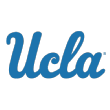 Johnny Juzang | SF | UCLA
Johnny Juzang | SF | UCLA
Top 100 ranking: N/A
The catalyst of UCLA's improbable Final Four run, Juzang scored over half of the Bruins' points in their upset win over Michigan. He finished with 28 on 19 shots in 38 minutes, including a clutch floater with just over a minute remaining.
The 20-year-old Los Angeles native has now scored 108 points in his five NCAA tournament games, showcasing his terrific scoring instincts and versatile shooting stroke in the process. At 6-foot-7 with a 6-foot-10 wingspan, Juzang proved he's far more than just a standstill shooter against Michigan and all throughout the tournament, sprinting around off ball screens into catch-and-shoot jumpers, attacking closeouts into pull ups, dropping in floaters in the paint and even creating space in mid-range spots at times.
After generating considerable buzz in the preseason going into his freshman year at Kentucky, Juzang was never able to carve out a consistent role under John Calipari in Lexington, knocking down just 33% of his 3s in 12 minutes per game on a team already loaded with perimeter talent in Immanuel Quickley, Tyrese Maxey and Ashton Hagans. Able to play right away after transferring back home to UCLA, Juzang wasn't all that consistent his first couple months of this season but started to show more and more of his microwave scoring as the season went along. That ultimately culminated in a monster month of March.
While he's proven he's more than just a spot shooter at the collegiate level, Juzang will have to be more efficient with his dribble, make quicker decisions, improve as a playmaker and defend with more consistency to play at the highest level. It has resulted in buckets more often than not for UCLA, but Juzang has a tendency to rely too much on catch-and-hold style isolations for stretches rather than using his jumper as a weapon out of quick-hitting actions. Not a run-and-jump athlete or overly physical, his margin for error on the defensive end will be thin on the wing at the next level.
But UCLA wouldn't be even close to the Final Four without Juzang's heroics, and he's certainly worked himself back onto the NBA radar with his play. The early NBA success of a player like Jordan Nwora certainly helps his case long term. With projected 2022 top-10 pick Peyton Watson joining him in Westwood next season, Juzang will likely see a boost in his efficiency, playing more of an off ball role that he'll be asked to function within at the next level. In the short term, scouts will have a close eye on how he stacks up against Gonzaga wing Corey Kispert in the semifinal.
-- Schmitz
Looking ahead to the Final Four
(1) Baylor vs. (2) Houston
Saturday, 5:14 p.m. ET on CBS
NBA scouts will have a close eye on the backcourt matchups in this one with DeJon Jarreau and Quentin Grimes clashing with Davion Mitchell and Jared Butler.
The heart and soul of the Houston Cougars and the AAC's Defensive Player of the Year, Jarreau played a key role in limiting Ethan Thompson to 11 points on 3-of-12 shooting and neutralizing Buddy Boeheim to the tune of 12 points on 3-of-13 from the field. Lean and quick-footed with a 6-foot-7 wingspan, the 23-year-old New Orleans native will likely be tasked with trying to keep Mitchell, the most explosive driver in the country, out of the paint. Although he hasn't made a 3 in two games, teams have had no answer for Mitchell's lightning-quick burst and slow-to-fast attack. Jarreau will likely be asked to blanket the skilled Butler for stretches as well. Grimes is a sturdy one-on-one defender in his own right and figures to get his chances against both Mitchell and Butler, Baylor's top scorer. Butler is 8 of his last 25 from the field and whether or not he can turn in a more efficient performance against one of the top man-to-man defenses in the country will surely play a role in determining his draft stock.
NBA personnel will likely be rooting for a Baylor-Gonzaga final to get a look at how Mitchell stacks up against projected top-5 pick and defensive stalwart Jalen Suggs on both ends.
-- Schmitz
(1) Gonzaga vs. (11) UCLA
Saturday, 8:34 p.m. ET on CBS
UCLA will be huge underdogs playing undefeated, No. 1-ranked Gonzaga, and will have their hands full on the interior in particular guarding the MVP of the NCAA tournament thus far, All-American Drew Timme. with starting center Cody Riley in foul trouble, the Bruins were forced to play sparsely used junior Kenneth Nwuba a career high 21 minutes against Michigan. That would likely be a disastrous outcome for the Bruins on Saturday.
The matchups at the forward position are probably the most interesting from an NBA perspective, with Corey Kispert going up against the streaky, but ultra-confident Jaime Jaquez Jr., and Jalen Suggs likely getting the task of slowing down the red-hot Johnny Juzang. Kispert, one of the most efficient and prolific scorers in the college game, has had a somewhat quiet NCAA tournament by his standards, shooting just 16-for-38 from the field over the past three games. He might be due for a breakout performance. Suggs is coming off his best game of the tournament and will be a handful for Juzang or any of the Bruins perimeter players to slow down in the open court and operating out of the pick and roll. Can Juzang, averaging 21.6 points per game through five contests, continue his blistering NCAA tournament performance with an elite defender like Suggs crowding his air space and being ultra-physical trying to contain his drives?
-- Givony
Jonathan Givony is an NBA draft expert and the founder and co-owner of DraftExpress.com, a private scouting and analytics service utilized by NBA, NCAA and international teams.
Mike Schmitz is an NBA draft expert and a contributor to DraftExpress.com, a private scouting and analytics service utilized by NBA, NCAA and international teams.

